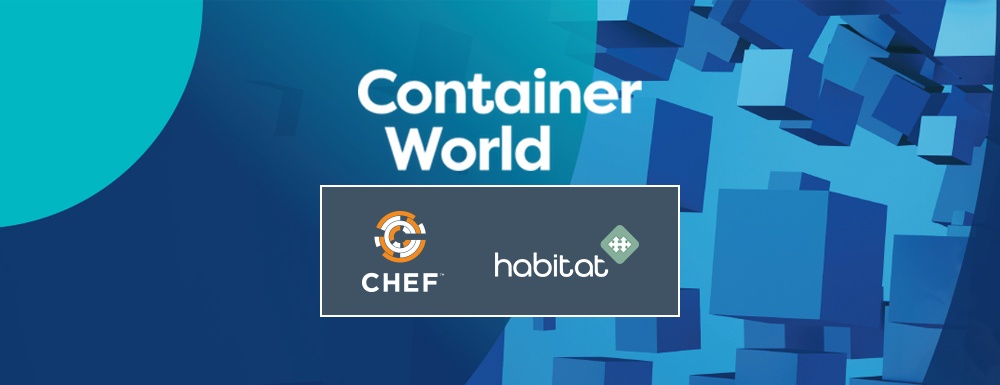Last week, Chef sponsored and attended Container World in Santa Clara, CA . This was an unofficial stop on the ongoing Hands on Habitat World Tour, and we held a well attended workshop on getting started with Habitat and containers.
Chef and Habitat guru @mfdii kicking off a container workshop at pre-conf #containerworld – try it at https://t.co/zyp2CnzVYL pic.twitter.com/tCa2KytKSC
— Marc Holmes (@marcholmes) February 21, 2017
Using Habitat with containers highlights the benefits of Habitat’s philosophies. Being able to export a fully functional container with the Habitat supervisor, service discovery, automatic clustering support, configuration automation, and more highlights the benefits of the Habitat approach. One piece of feedback we received from multiple attendees was that Habitat got rid of many of the operational concerns containers bring to the table. This of course harkens back to a diagram I tweeted over a year ago.
Containers in Dev vs Prod pic.twitter.com/YqDHvigW8r
— Michael Ducy (@mfdii) February 10, 2016
One of my favorite things to do at any conference is to walk the exhibitor hall. Doing this helps you to see the trends of where a market is headed, and also what pains consumers might be having in a given space. A trend we are definitely seeing is in the container security and compliance arena. There were many vendors that were offering solutions to verify that container images and deployments meet compliance and security baselines. This is an area Chef has been helping with for sometime.
Our Compliance Automation project InSpec has support for scanning Docker hosts and containers for compliance. We also recently released support for running InSpec alongside Habitat in order to scan Habitat based systems for compliance and security. Additionally, since Habitat builds containers from the application down, it provides increased visibility into exactly what’s been packaged inside a container. This information is all queryable via the Habitat Supervisor’s REST based API.
Habitat provides app-centric containers by building from the app down, rather than the OS up. https://t.co/zyp2CnzVYL #containerworld pic.twitter.com/cYEaH1VQdz
— Marc Holmes (@marcholmes) February 21, 2017
The highlight for me was watching Kelsey Hightower’s keynote. Kelsey posed a very important question, “Would you go to a conference called RPMCon? A conference dedicated to RPMs?”
.@kelseyhightower announces he’s starting RPMCon, a conference dedicated to creating RPMs #containerworld pic.twitter.com/GvgaG1A8pI
— Michael Ducy (@mfdii) February 22, 2017
While Kelsey’s question was a bit tongue in cheek, he does pose an important point. Containers are just another packaging format and should be thought of as such. What’s really important is the platform that is built around the packaging format. For Chef, that really validates Habitat’s approach of build once, run anywhere, no matter the resulting compute runtime (VM, Container, or Bare Metal).
To learn more about Chef, Habitat, and InSpec, join us at ChefConf 2017 in Austin, TX where you’ll have an opportunity to participate in hands-on workshops and attend sessions dedicated to infrastructure, application, and compliance automation.


